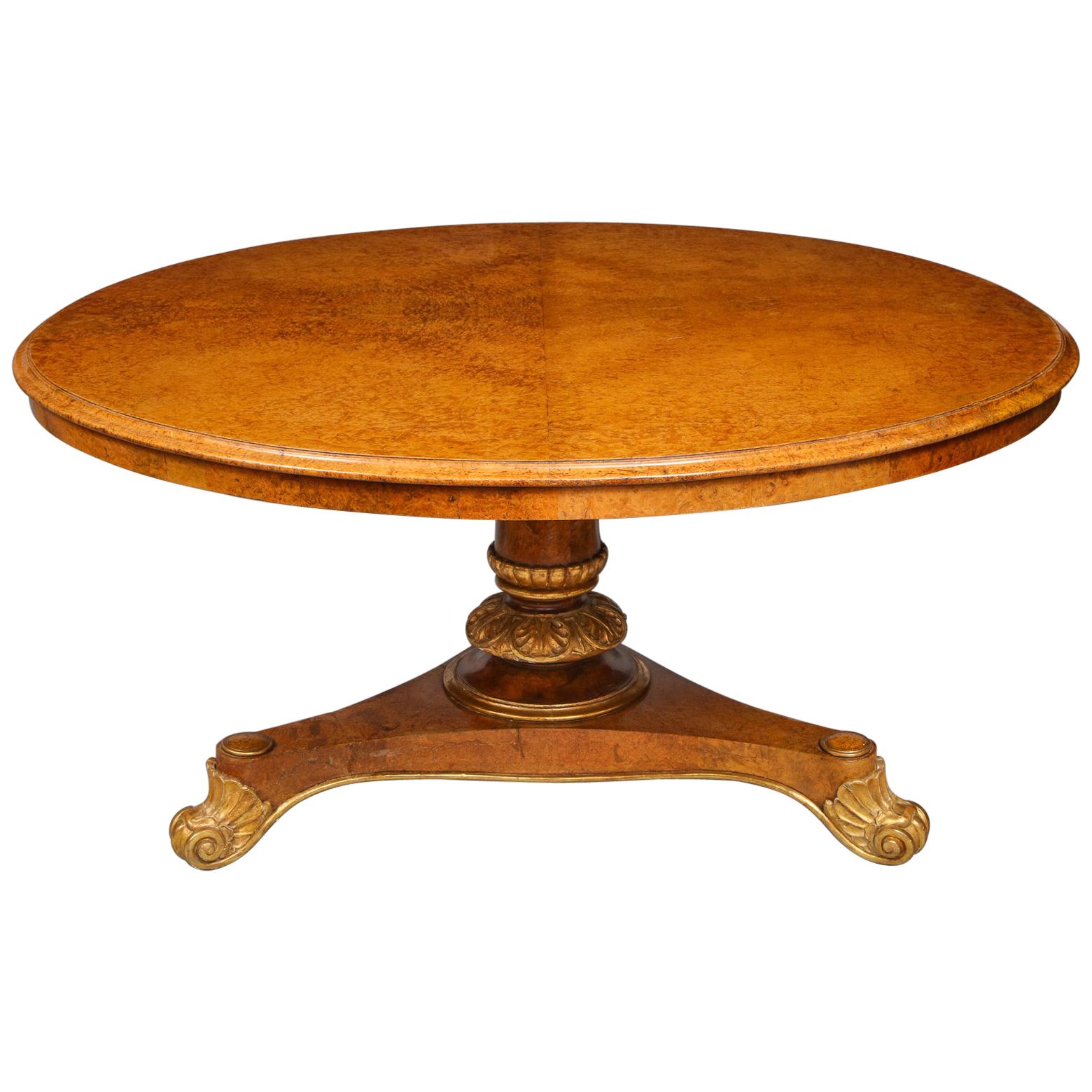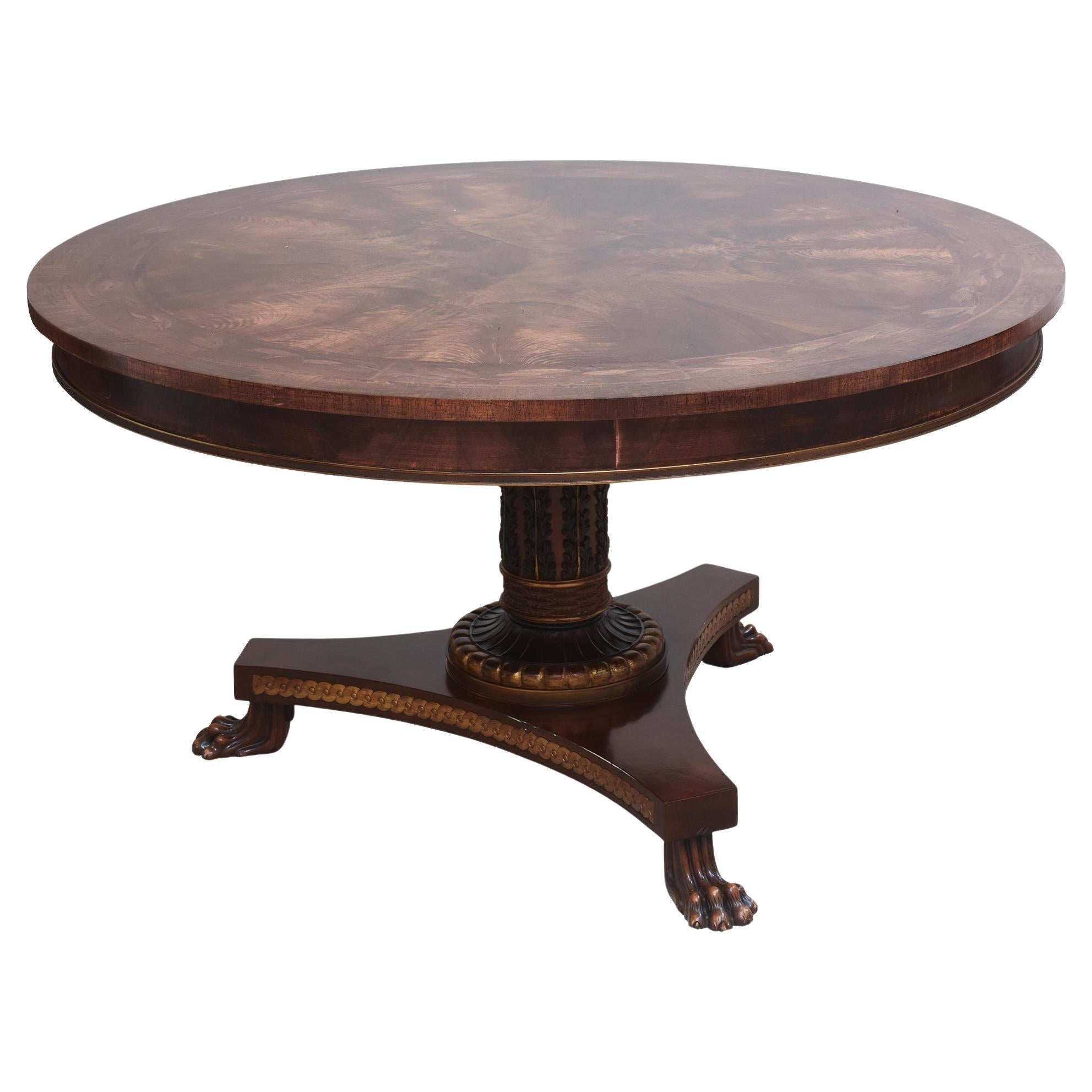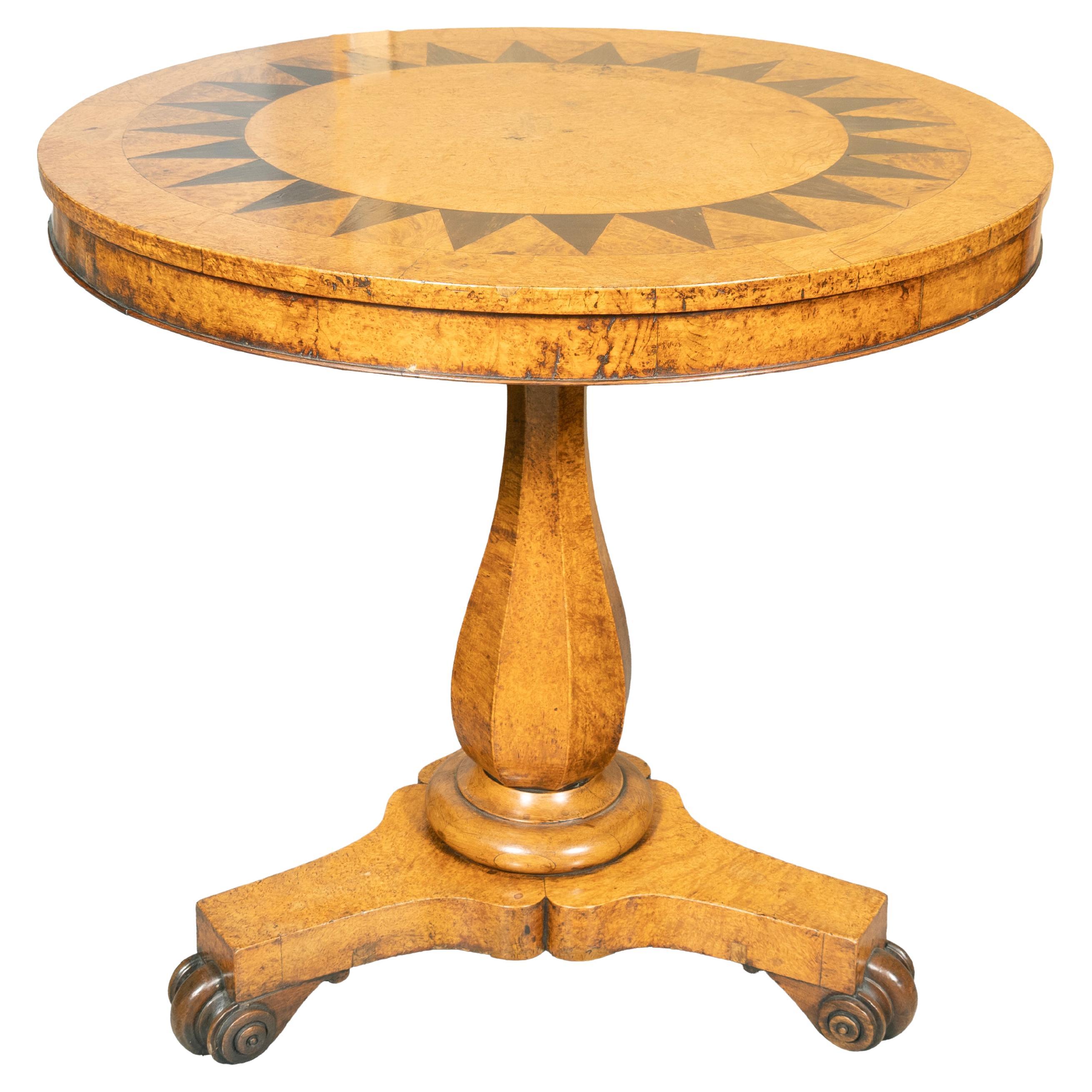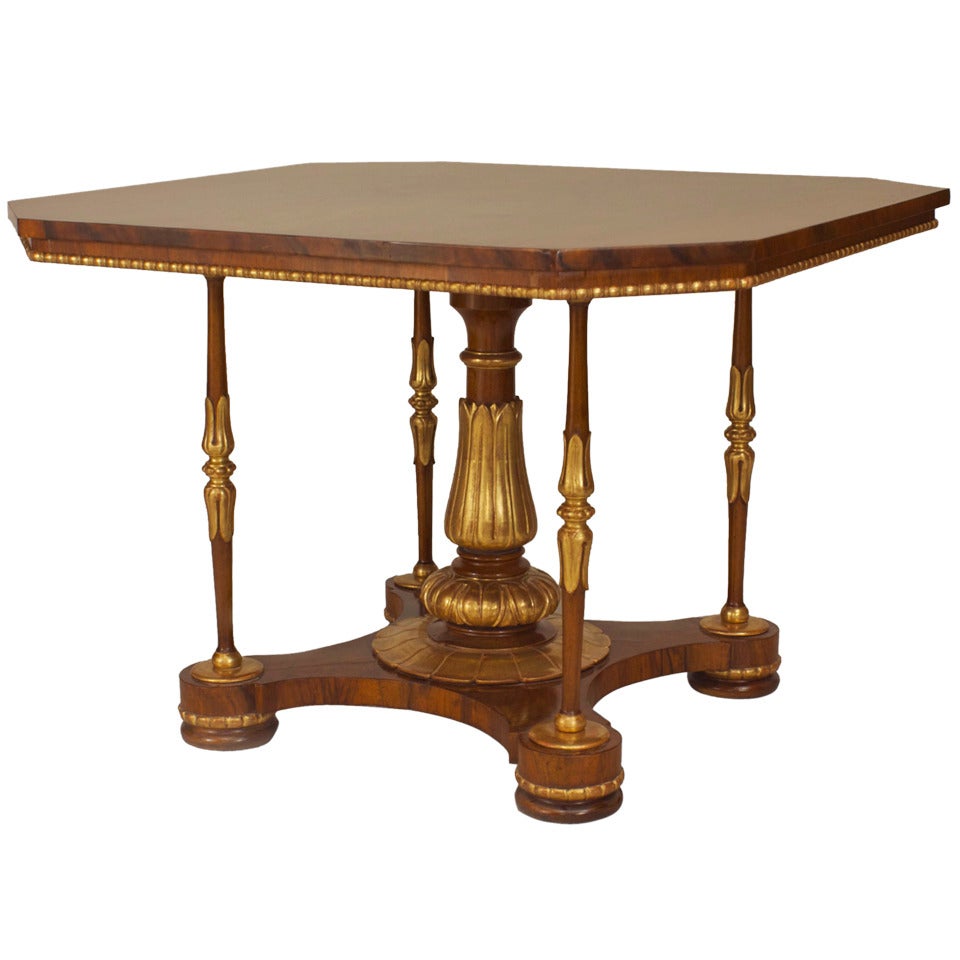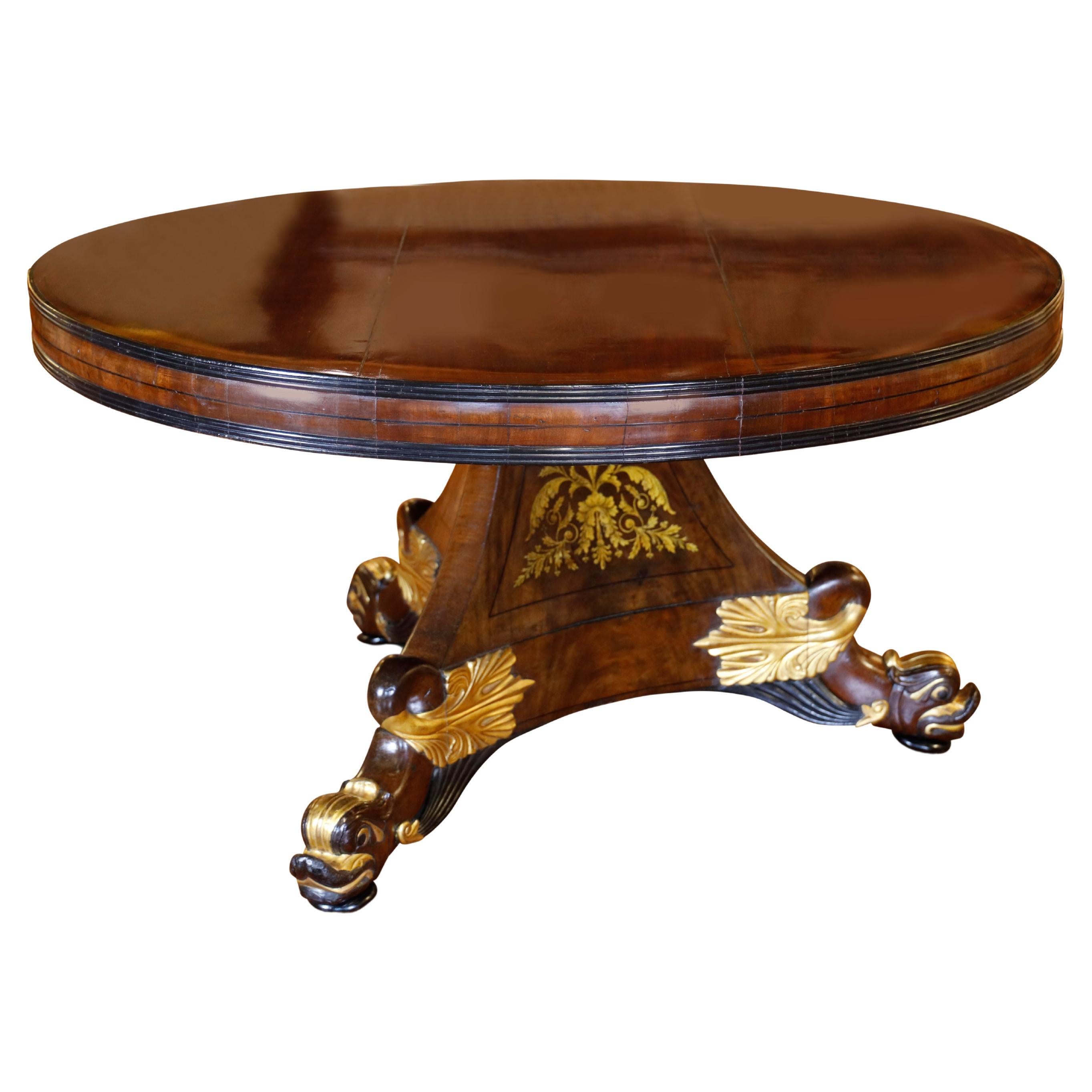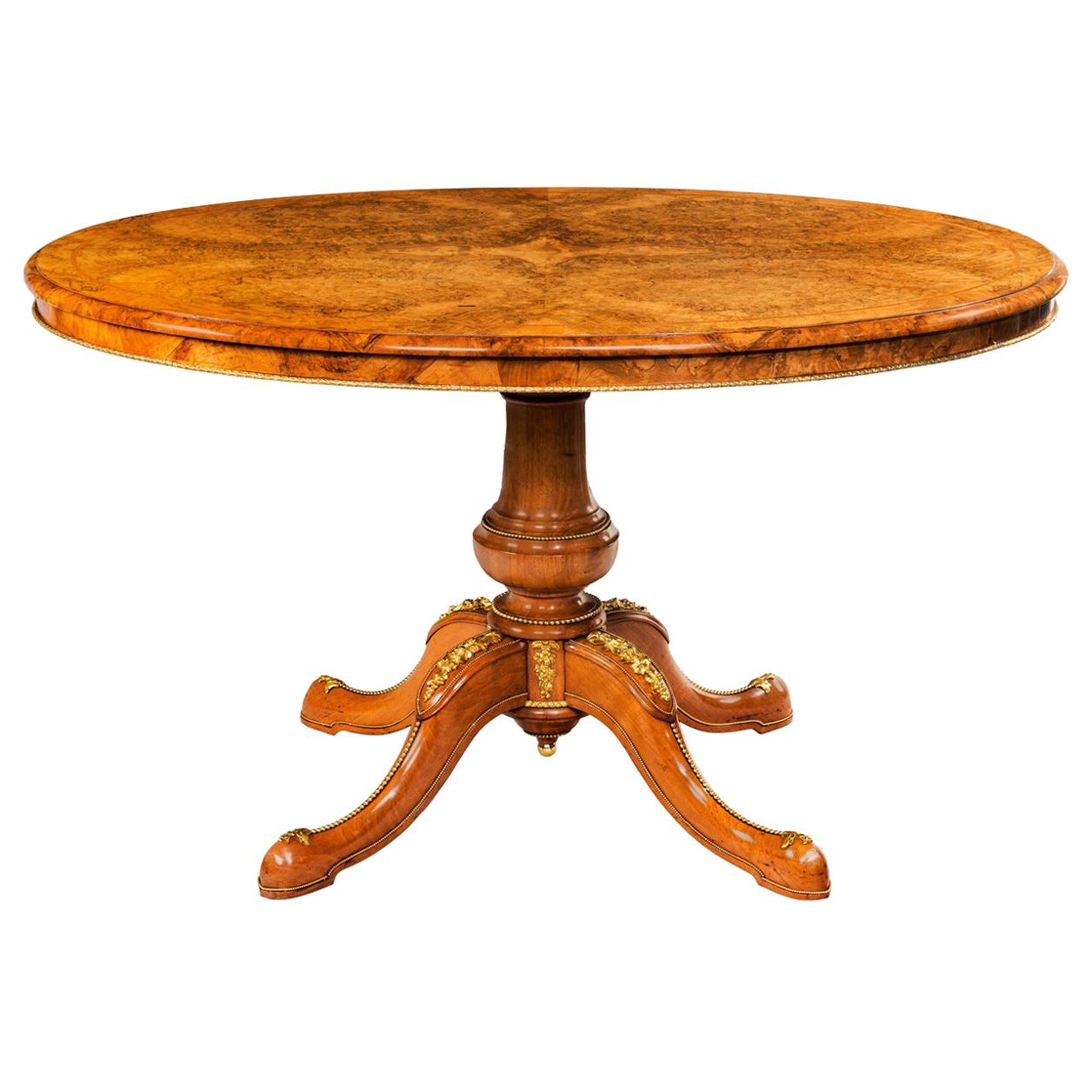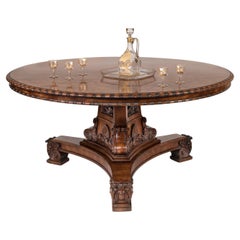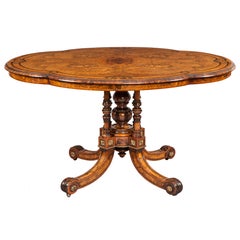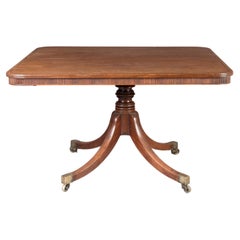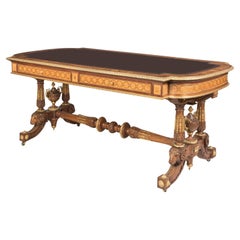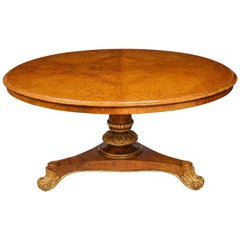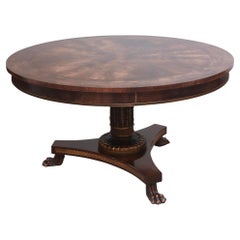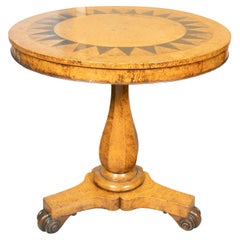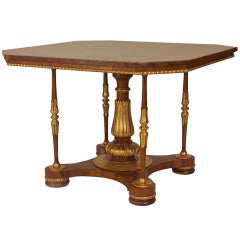Items Similar to English William IV Period Burr Elm Parcel-Gilt Centre Table Attributed to Seddon
Want more images or videos?
Request additional images or videos from the seller
1 of 8
English William IV Period Burr Elm Parcel-Gilt Centre Table Attributed to Seddon
$50,779.44
£38,000
€44,081.28
CA$71,612.47
A$78,679.04
CHF 41,118.15
MX$938,312.71
NOK 520,667.02
SEK 485,045.24
DKK 329,396.09
About the Item
A William IV Period Parcel Gilt Burr Elm Centre Table
Attributed to Thomas & George Seddon
The circular table veneered throughout with finely figured burr elm and relieved with parcel gilding throughout, the top with a tilting mechanism and a gilded band to the edge, supported on a central column carved with water leaf ornament and a tripartite plinth support with conforming parcel gilding and carved acanthus oblate bun feet with hidden castors.
English, circa 1830
This table belongs to a small number of related examples attributed to the famous cabinetmaker Seddon and his contemporaries such as William Riddle. The Rothschild family owned a similar table at their Mentmore Towers residence.
Comparative literature:
Beard, Geoffrey, and Christopher Gilbert. Dictionary of English Furniture Makers, 1660-1840. Furniture History Society : W.S. Maney, 1986, p. 390, fig. 767, illustrating a related table.
- Attributed to:Thomas & George Seddon (Cabinetmaker)
- Dimensions:Height: 28 in (71.12 cm)Diameter: 52.5 in (133.35 cm)
- Style:William IV (Of the Period)
- Materials and Techniques:
- Place of Origin:
- Period:
- Date of Manufacture:circa 1830
- Condition:Wear consistent with age and use.
- Seller Location:London, GB
- Reference Number:Seller: 96191stDibs: LU954744855242
About the Seller
5.0
Recognized Seller
These prestigious sellers are industry leaders and represent the highest echelon for item quality and design.
Established in 1964
1stDibs seller since 2012
54 sales on 1stDibs
Typical response time: <1 hour
Associations
The British Antique Dealers' AssociationLAPADA - The Association of Arts & Antiques Dealers
- ShippingRetrieving quote...Shipping from: London, United Kingdom
- Return Policy
More From This Seller
View All19th Century William IV Period Mahogany Centre Table Attributed to Gillows
By Gillows of Lancaster & London
Located in London, GB
A William IV Period Mahogany Centre Table
Attributed to Gillows
Constructed from a flamed Honduras Mahogany, book-matched with great effect on the top; the table supported on an inc...
Category
Antique 19th Century English William IV Center Tables
Materials
Mahogany
19th Century Shaped Centre Table with Inlay and Gilt Metal by Gillows
By Gillows of Lancaster & London
Located in London, GB
An Antique Shaped Centre Table by Gillows
Constructed in Circassian walnut, with specimen woods inlays, and gilt metal adornments; rising from a castor sho...
Category
Antique 19th Century British Victorian Center Tables
Materials
Metal
An Early 19th Century George III Period Mahogany Table on Brass Castors
Located in London, GB
George III rectangular Breakfast table.
The well figured Cuban mahogany top with a reeded moulded edge and having an unusual vertical ree...
Category
Antique 19th Century English George III Tables
Materials
Brass
19th Century Ormolu-Mounted Burr Walnut Table in the Louis XVI Style by Pretot
By Henri Picard, Pretot & Cie
Located in London, GB
A Superb Library Table in the Louis XVI Manner
By Maison Pretot of Paris
Of exceptional quality, constructed using beautifully grained woods, including burr walnut, boxwood, and syc...
Category
Antique 19th Century French Louis XVI Center Tables
Materials
Ormolu
19th Century English Walnut and Ormolu Mounted Centre Table
By Holland & Sons
Located in London, GB
A very fine and substantial centre table in the Louis XVI in the Manner of Holland & Sons
Of exceptional quality, utilising beautifully grained woods, including Circassian walnut,...
Category
Antique Mid-19th Century British Louis XVI Center Tables
Materials
Ormolu
19th Century Amboyna Library Table in the Manner of Morel & Seddon
By Edwards & Roberts, Morel & Seddon
Located in London, GB
A library table in the manner of Morel & Seddon later retailed by Edwards and Roberts
Of kidney form, the sled bases, standing on oblate bun feet having spandrel blocked end suppo...
Category
Antique Early 19th Century English George IV Tables
Materials
Amboyna
You May Also Like
George IV Amboyna and Parcel Gilt Center Table
Located in Greenwich, CT
A very fine George IV amboyna burl and giltwood center table attributed to T. & G. Seddon (formerly Morel and Seddon), circa 1835, the circular t...
Category
Antique 1830s English George IV Center Tables
Materials
Giltwood, Amboyna
Exceptional George IV Period Gold-Gilded Mahogany Breakfast or Entrance Table
Located in North Miami, FL
This exquisite George IV period mahogany breakfast or entrance table, dating to the 1820s, showcases superb craftsmanship and timeless elegance. The table features a boldly turned a...
Category
Antique 1820s British George IV Dining Room Tables
Materials
Mahogany
William IV Burr Elm And Ebony Center Table
Located in Essex, MA
Circular tilt top with elaborate burl and ebony circular sawtooth inlay. Turned octagonal support and tripartite base with carved scroll feet.
Category
Antique 1830s English William IV End Tables
Materials
Ebony, Elm
English Regency Walnut and Gilt Center Table
Located in Queens, NY
English Regency (circa 1850s) walnut & gilt trimmed center table with a square top & canted corners supported on a centered pedestal & 4 corner columns on a platform base (attributed...
Category
Antique 19th Century English Regency Center Tables
Materials
Gold Leaf
William IV Mahogany and Gilt Center Table
Located in Woodbury, CT
George IV mahogany center table with ebony banding and reeded edge. Parcel gilt foliate design on triform base resting on carved feet featuring gilt and ebonzied dolphins.
Category
Antique Early 19th Century English William IV Center Tables
Materials
Ebony, Mahogany
Burr Walnut and Ormolu-Mounted Centre Table with Superb Quartered Veneered Top
By Holland & Sons
Located in Lymington, Hampshire
An exhibition quality burr walnut and ormolu-mounted centre table with superb quartered veneered top. Attributed to Holland and Sons or Gillows.
Category
Antique Mid-19th Century British Center Tables
Materials
Ormolu
More Ways To Browse
Antique English Dictionary
English Elm Table
Black Lacquer Pedestal
Botanical Specimen
Brutalist Wood Art
Carved Walnut Pedestal
Chinese Table Carved Marble
Chinoiserie Bamboo Table
Column Table Base
Crossed Arrows
Danish Modern Dining Table With 2 Leaves
Dynasty Horse
E Lee
English Faux Bamboo
Flip Top Bar
Floating Desk
Glass Monkey
Gold Florentine Furniture
